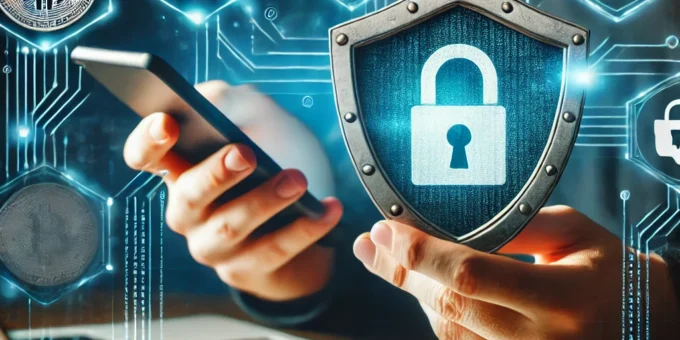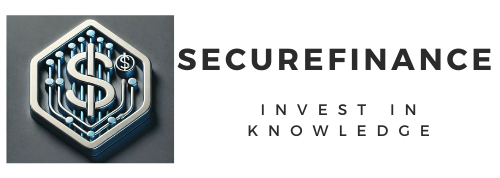
In the fast-growing world of cryptocurrency, security has become more crucial than ever. With increasing adoption and valuation, digital currencies have attracted not only investors but also a myriad of cybercriminals looking to exploit unsuspecting users. Protecting your crypto investments from these threats requires a combination of awareness, education, and the use of best practices. This guide will delve into various strategies to avoid scams and safeguard your crypto investments, ensuring your assets remain secure in the dynamic digital landscape.
How to Avoid Scams in the Crypto Space
The cryptocurrency landscape, unfortunately, includes various scams that target everyone, from novices to experienced investors. Understanding the types of scams and how they work is the first step to avoid falling victim. Scams are often well-disguised and may appear genuine, so staying vigilant is critical.
Understanding the Types of Crypto Scams
Crypto scams come in many forms, each preying on different vulnerabilities. Here’s an overview of some of the most common ones:
- Phishing Scams: These scams involve fake emails or websites designed to look like legitimate exchanges or wallet providers, tricking users into providing private information like passwords or private keys.
- Ponzi Schemes: Here, early investors are paid returns from funds contributed by new investors, not from profit. These schemes eventually collapse, leaving most investors with significant losses.
- Fake Exchanges and ICOs (Initial Coin Offerings): Fraudulent platforms and projects that offer unrealistic returns on investment, often disappearing once they collect funds.
Importance of Education in Avoiding Scams
A well-informed investor is much harder to fool. Staying educated about the latest scams, market trends, and security practices greatly enhances your ability to detect potential risks. It’s essential to rely on trusted sources for crypto knowledge, including established financial news outlets, reputable online forums, and official exchange blogs. Avoid relying on unsolicited advice from strangers on social media, as these platforms are often exploited by scammers.
Spotting Red Flags of Crypto Scams
Certain warning signs can indicate a scam. Familiarizing yourself with these red flags can save you from costly mistakes. Here are some to look out for:
- Unrealistic Promises of High Returns: No legitimate investment can guarantee huge profits with no risk. Scammers often claim unrealistically high returns to lure in investors.
- Lack of Transparency or Detailed Information: Trustworthy projects will provide comprehensive whitepapers, clear team backgrounds, and verifiable information. If an investment lacks these, approach with caution.
Securing Your Crypto Investments
To protect your assets, it’s essential to employ strong security practices:
- Use Strong Passwords and Change Them Regularly: Avoid reusing passwords, especially those that are short or easily guessed. Instead, use long, complex combinations of letters, numbers, and special characters.
- Avoid Public Wi-Fi Networks: These networks are easy targets for hackers. If you must access your wallet in public, use a VPN to encrypt your connection.
Using Secure Wallets for Crypto Assets
Wallets are essential tools for holding cryptocurrency, but not all wallets are created equal. Choosing the right type of wallet can significantly enhance your security:
- Hot Wallets: Online wallets are convenient for frequent traders but are more vulnerable to hacking.
- Cold Wallets: These offline wallets, such as hardware wallets, provide a safer storage solution for long-term holdings.
Why Cold Wallets Offer More Security
Cold wallets, or offline wallets, are considered the safest option for storing crypto assets since they are disconnected from the internet, minimizing exposure to online threats. However, they are less convenient for quick transactions and can be lost or damaged if not stored carefully.
Best Practices for Choosing a Secure Exchange
Choosing a reputable exchange for buying, selling, and holding cryptocurrency is crucial. When evaluating exchanges, consider these factors:
- Security Features: Look for features like multi-factor authentication (MFA), withdrawal whitelist options, and insurance policies.
- Reviews and Reputation: Research user reviews and look into the exchange’s history, including past security incidents or scandals.
How to Verify Exchange Legitimacy
Before committing funds, verify the exchange’s legitimacy by checking for proper licensing and regulatory compliance. Some legitimate exchanges are licensed and regulated by financial authorities in their jurisdictions, while others operate more independently. A lack of regulation doesn’t always indicate a scam, but added regulation provides additional layers of protection.
Implementing Multi-Factor Authentication (MFA)
MFA is one of the most effective tools for securing online accounts. By requiring additional verification, such as a code sent to your phone, MFA makes it much harder for hackers to gain access even if they obtain your password.
Recognizing the Dangers of Phishing Attacks
Phishing attacks can occur through emails, fake websites, or even phone calls. These scams aim to trick you into providing sensitive information by pretending to be a legitimate service. Be cautious of unsolicited requests for information, and double-check URLs and sender addresses for any signs of fraud.
Importance of Backup and Recovery Strategies
Loss of access to your crypto wallet can be devastating. Having a secure backup and recovery plan can protect you in case of emergencies:
- Securing Your Seed Phrases: Write down your seed phrases and store them in a safe location. Never share them online or with anyone.
- Recovery Plans: Consider a trusted backup strategy, whether with a family member or secure storage service, to help regain access if you lose your primary wallet.
How to Avoid Pump and Dump Schemes
These schemes manipulate the value of coins by artificially inflating prices, prompting investors to buy in at high rates. Look out for sudden price spikes and avoid investing based on hype alone.
The Role of Blockchain Transparency
Blockchain technology provides transparency, enabling users to trace transactions and verify the integrity of projects. Legitimate projects often publish their blockchain records to build trust.
Avoiding Fake ICOs and Token Scams
Initial Coin Offerings (ICOs) were once a popular method for new projects to raise funds but have become a breeding ground for scams. Before investing in any ICO, thoroughly research the project, review the whitepaper, and verify the identities of the team members.
You Can Also Read : How to Manage Loan Repayments Without Straining Your Budget
Verifying Smart Contract Code
Smart contracts are the backbone of many crypto projects. It’s wise to review these contracts’ source code or consult third-party auditors to ensure the contract operates as promised.
